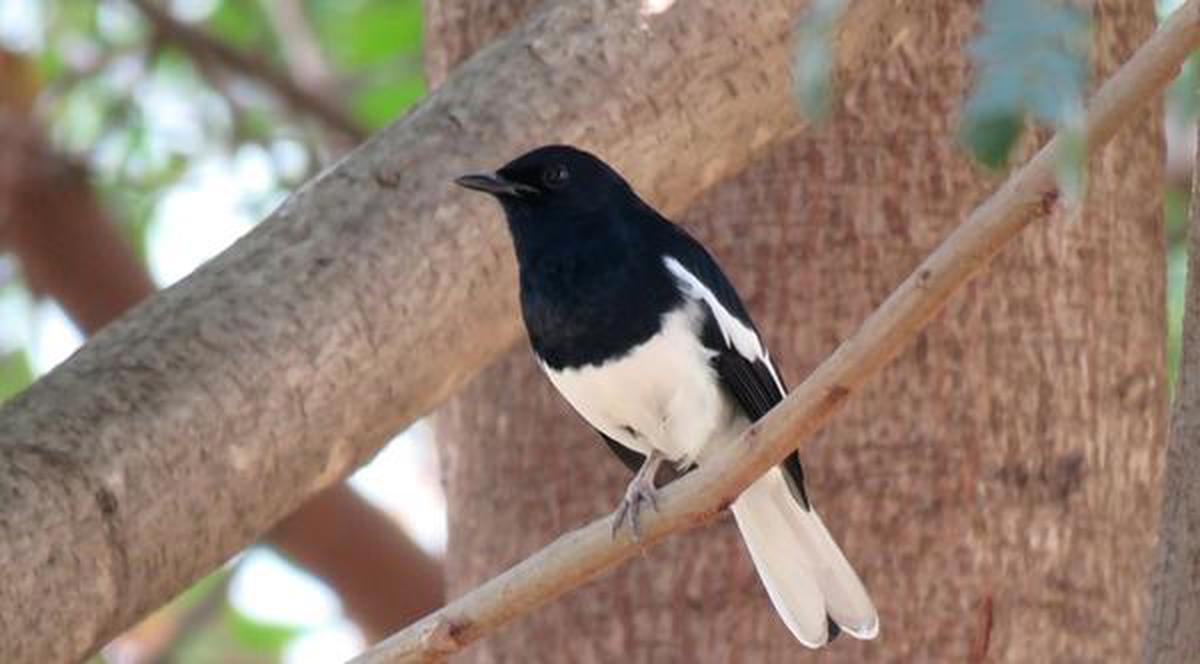Birdwatching is a rewarding hobby that allows us to connect with nature and appreciate the beauty of our feathered friends. Among the diverse array of birds, small black and white species hold a unique charm with their striking colors and distinctive behaviors. In this article, we’ll explore ten fascinating small black and white birds, highlighting their characteristics, habitats, and interesting facts that will deepen your appreciation for these remarkable creatures.
Small Black and White Birds: Black-capped Chickadee (Poecile atricapillus)
The Black-capped Chickadee is a small songbird commonly found in North America. Recognizable by its black cap and bib, white cheeks, and soft gray body, this bird measures about 4.5 to 5.5 inches in length. Chickadees are known for their distinctive “chick-a-dee-dee-dee” call, which varies in intensity depending on the level of threat from predators.
Habitat and Behavior
Black-capped Chickadees prefer mixed forests and wooded areas, often visiting bird feeders in residential backyards. They are highly social birds that live in flocks, especially during the winter months. These birds are also known for their curious nature and will readily approach humans, making them a favorite among birdwatchers.
Fun Fact
Chickadees have an incredible memory; they can remember the locations of thousands of seeds that they store for later use, showcasing their impressive cognitive abilities.
Small Black and White Birds: Snow Bunting (Plectrophenax nivalis)
The Snow Bunting is a small, migratory songbird that breeds in the Arctic and migrates to the northern parts of the United States during winter. These birds are known for their striking plumage, featuring a mostly white body with black wings and a black tail, giving them a beautiful contrast against the snowy landscapes they inhabit.
Habitat and Behavior
Snow Buntings prefer open habitats, such as fields, tundra, and coastal areas, where they forage for seeds and insects. They are often seen in large flocks during migration, creating a stunning sight against the backdrop of winter.
Fun Fact
Snow Buntings have specialized feathers that allow them to withstand extremely cold temperatures, making them one of the hardiest birds in North America.
Eastern Towhee (Pipilo erythrophthalmus)
The Eastern Towhee is a medium-sized bird known for its bold black and white plumage. Males feature a striking black head, back, and wings, with white belly and flanks, while females are brown instead of black. These birds measure about 6.5 to 8 inches in length.
Habitat and Behavior
Eastern Towhees prefer dense shrubbery, brushy areas, and forest edges where they can forage for seeds, insects, and fruits. Their distinctive call, a sharp “drink-your-tea,” is often heard in their habitat.
Fun Fact
Towhees have a unique foraging behavior called “double-scratching,” where they scratch the ground with both feet simultaneously to uncover hidden food.
Common Blackbird (Turdus merula)
The Common Blackbird is a small to medium-sized bird native to Europe, Asia, and North Africa. Males are entirely black with a bright yellow eye-ring and bill, while females are brown and speckled. They measure about 9 to 11 inches in length.
Habitat and Behavior
Common Blackbirds are often found in gardens, parks, and woodlands, where they forage for fruits, berries, and insects. They are known for their melodious song, which is often heard during the breeding season.
Fun Fact
These birds are highly adaptable and can thrive in urban environments, often foraging in parks and gardens for food scraps.
White-crowned Sparrow (Zonotrichia leucophrys)
The White-crowned Sparrow is a small bird known for its distinctive black and white crown stripes. Adult males have a gray body with a black-and-white striped head, while females have a more subdued coloration. These birds measure about 6.5 to 7.5 inches in length.
Habitat and Behavior
White-crowned Sparrows are typically found in open fields, shrubby areas, and along roadsides. They are often seen foraging on the ground for seeds and insects, particularly during migration.
Fun Fact
These sparrows are known for their beautiful songs, which vary by region, and are learned from older males, showcasing their cultural transmission of behavior.
Pied Wagtail (Motacilla alba)
The Pied Wagtail is a small, energetic bird commonly found in Europe and Asia. It has a distinctive black and white plumage with a long, slender body and a characteristic wagging tail. Pied Wagtails measure about 7 to 8 inches in length.
Habitat and Behavior
Pied Wagtails are often found in urban areas, fields, and near water bodies where they hunt for insects and larvae. They are known for their lively behavior and can often be seen running and hopping along the ground.
Fun Fact
Pied Wagtails are excellent foragers and can often be seen catching insects mid-flight, showcasing their agility and speed.
Black-and-white Warbler (Mniotilta varia)
The Black-and-white Warbler is a small songbird native to North America, easily recognizable by its black-and-white striped appearance. These birds measure about 4.5 to 5.5 inches in length and have a distinct, melodic song.
Habitat and Behavior
Black-and-white Warblers prefer mature forests, where they forage for insects and larvae on tree trunks and branches. Unlike many other warblers, they often forage in a unique way, moving along tree bark in a creeping manner.
Fun Fact
Black-and-white Warblers are known for their ability to mimic the calls of other bird species, which may help them avoid predators and compete for food resources.
California Quail (Callipepla californica)
The California Quail is a small game bird native to the western United States. Males are characterized by their unique black and white facial markings and a distinctive topknot. They measure about 9.5 to 11 inches in length.
Habitat and Behavior
California Quails are commonly found in shrublands, grasslands, and near urban areas where they forage for seeds and vegetation. They are social birds and often travel in groups, providing a charming sight as they scurry across the ground.
Fun Fact
These quails are known for their distinctive call, which sounds like “chi-ca-go,” and can be heard during mating season, signaling their presence to potential mates.
European Magpie (Pica pica)
The European Magpie is a striking black and white bird known for its intelligence and adaptability. They have glossy black wings and tail feathers, contrasting with their white belly and face. European Magpies measure about 16 to 24 inches in length.
Habitat and Behavior
These birds thrive in a variety of habitats, including woodlands, grasslands, and urban areas. They are highly social and often seen in pairs or small groups. Magpies are known for their curiosity and problem-solving skills, often engaging in complex social behaviors.
Fun Fact
European Magpies are known to collect shiny objects, which has led to various myths and superstitions about their behavior. They are also considered one of the most intelligent bird species, capable of recognizing themselves in mirrors.
American Woodcock (Scolopax minor)
The American Woodcock is a unique bird known for its distinctive appearance and mating displays. These small birds have a chunky body, long bill, and large eyes positioned high on their heads. Their plumage is mottled brown and gray, providing excellent camouflage. They measure about 10 to 12 inches in length.
Habitat and Behavior
American Woodcocks prefer open woodlands and fields with dense underbrush, where they forage for earthworms and insects. During the breeding season, males perform elaborate aerial displays, known as “sky dancing,” to attract females.
Fun Fact
Woodcocks have a fascinating courtship ritual that involves flying high into the air and producing a series of musical twittering sounds as they descend, creating a mesmerizing sight for observers.
Conclusion
Small black and white birds are not only visually striking but also play vital roles in their ecosystems. From the melodious calls of the Black-capped Chickadee to the unique behaviors of the California Quail, these birds capture the interest of birdwatchers and nature enthusiasts alike. By appreciating the diversity and beauty of these fascinating species, we can deepen our connection to nature and work towards conserving their habitats for future generations.
FAQs
1. What are some common habitats for small black and white birds?
Small black and white birds can be found in various habitats, including forests, gardens, urban areas, wetlands, and grasslands.
2. How can I attract small black and white birds to my backyard?
To attract these birds, provide food sources such as seeds, fruits, and insects, and create shelter with shrubs, trees, and birdhouses.
3. Are small black and white birds migratory?
Many small black and white bird species are migratory, traveling to warmer regions during the winter months. However, some species may be year-round residents in their habitats.
4. What should I do if I find a injured small black and white bird?
If you find an injured bird, contact a local wildlife rehabilitation center for guidance. Avoid handling the bird unless necessary, as improper care can cause more harm.
Also read: Discover the Versatility of H&M Cardigans: Your Ultimate Style Guide




Leave a Comment